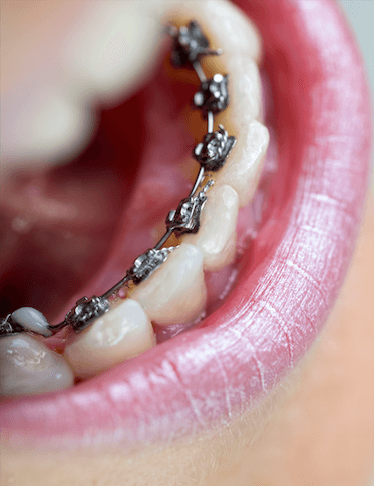Why We Recommend Starting Early Orthodontic Treatment

Timing is everything when it comes to orthodontic treatment for your child. Some orthodontic problems can wait for several years before being addressed – slightly crooked or gapped teeth can be fixed with tooth straightening or other cosmetic dental procedures at nearly any age. Other orthodontic problems become more difficult to address over time. In some cases, dental professionals recommend early orthodontic treatment.
Early treatment means that the orthodontist provides treatment while the patient still has some baby teeth. Orthodontists also refer to it as an interceptive treatment because it addresses problems in their earliest stages before they can pose a serious problem.
The American Association of Orthodontists (AAO) suggests every child has his or her first checkup with an orthodontist by the age of 7 years. By this age, there are permanent teeth for an orthodontist to evaluate the child’s developing teeth and jaws. This early evaluation can provide a wealth of information that can guide the child’s dental and orthodontic care for years. Of course, a child should see an orthodontist earlier than the age of 7 if an orthodontic problem develops sooner.
What to Expect at the Checkup
The initial checkup will likely have one of three outcomes:
- No immediate treatment is necessary, and treatment will not likely be needed in the future
- The orthodontist will recommend treatment in the future and follow the child periodically, as the child’s face and jaws continue to grow and develop
- The orthodontist spots a problem that could benefit from early treatment
Orthodontists have the training and skills needed to spot subtle problems, even in young children. They can also perform a wide variety of procedures to address these problems early when the issues are more likely to respond positively to treatment.
Early Orthodontic Treatment Goals
Early orthodontic treatment has a number of goals. Orthodontists can guide the growth of a child’s jaw, for example, or guide permanent teeth into a more favorable position. This early treatment can improve appearance and improve the way the child’s lips meet. Early orthodontic treatment can correct harmful oral habits, and even lower the risk of trauma associated with protruding front teeth too.
While most orthodontic problems benefit from treatment after all the patient’s permanent teeth have come in, there are some issues that become more serious over time. The goals of early treatment are to detect developing problems, eliminate the root cause of an orthodontic issue, guide the growth of a child’s facial and jaw bones, and to provide enough space for the incoming permanent teeth.
Some patients who receive early orthodontic treatment require a second course of treatment later after all their permanent teeth have come in.
Orthodontic Problems that Benefit from Early Treatment
Early orthodontic treatment effectively addresses several orthodontic problems, such as:
- Underbite – when the child’s lower front teeth sit ahead of the upper front teeth
- Crossbite – when the patient’s jaw shifts to one side
- Very crowded teeth, which can push each other out of place or damage teeth
- Excessively spaced teeth that cause gaps between the teeth
- Extra or missing teeth
- Teeth that meet abnormally, or don’t meet at all
- Habits, such as thumb sucking, finger sucking or use of a pacifier, which affect the teeth or jaw growth
- Inherited orthodontic problems
- Injuries from accidents
- Orthodontic problems resulting from dental disease or abnormal swallowing
Early orthodontic treatment is an umbrella term that covers many procedures. Early treatment may include the use of a fixed or removable appliance that moves teeth, changes the position or the jaw or holds teeth in place to bring about desirable changes. Early orthodontic treatment may involve the removal of some baby teeth to help permanent teeth come in easier and straighter.
For more information about starting early orthodontic treatment, consult with your child’s dentist or with Dr. Natalia Valderrama, our orthodontist and dentofacial orthopedist at Valderrama orthodontics in Suntree. She has more than 20 years of dental and medical experience and can answer any questions you might have regarding with child’s growth and development. Her consultations are complimentary! Keep in mind that early orthodontic treatment can give your child something to smile about for the rest of his or her life. Remember – timing is everything when it comes to early orthodontic treatment.



Let's Get Social